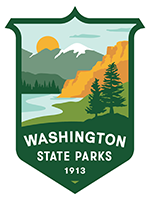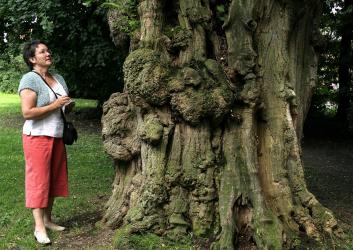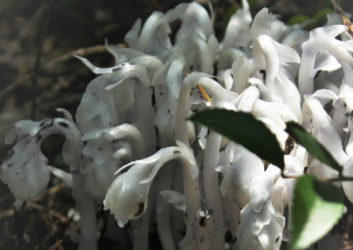Tree ID: Douglas-fir tree
Have you heard what the mouse did to escape the wildfire? Here’s the story:
A wildfire erupts in the forest, and the mouse escapes by running up a Douglas-fir tree, which it knows can survive the fire because of its thick bark. The mouse looks for a place to hide under the scales of the Douglas-fir cone. But the undersized fire shelter leaves the tiny mouse’s hind quarters exposed.
How Douglas-fir cones got the nick name "mouse butts"
(Check out the back legs and tails in the image above.)
You’re welcome!
Tree ID can be a challenge, even for park staff who work among trees every day. Indeed, there’s a lot to untangle: confusing jargon and terms, unpronouncable Latin names (it’s a dead language for a reason, folks!) and similar-looking species.
We are the Washington State Parks Arbor Crew, and we’re here to help!
Over the coming months, we’ll be writing blog posts to highlight our favorite tree species, interesting tree specimens in our parks, memorable tree stories and natural history. We’ll share fun facts, children’s tales and other cool methods to learn about trees in our parks.
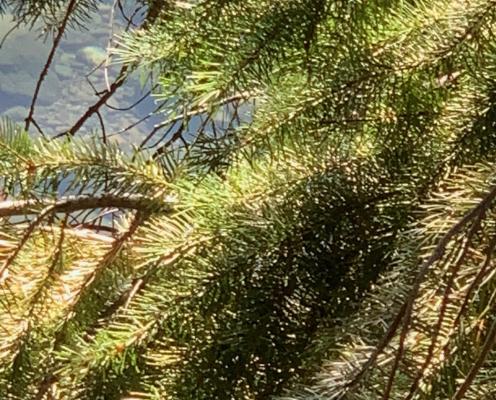
What’s in a name?
Names can be tricky. The names of trees tell stories and contain history, but just as people go by different names, so do trees. Douglas-fir is also sometimes called Oregon pine or even Douglas spruce. But it isn’t a true fir, pine or spruce tree. It belongs in its own category, the genus Pseudotsuga, which means “false hemlock” (because it also isn’t a hemlock).
Confused? It gets better. The full unpronounceable Latin name for Douglas-fir is Pseudotsuga menziesii. Although its common name gives a shoutout to the famous naturalist David Douglas, who named many of our western conifers, its scientific name acknowledges the person who first characterized the plant, Douglas’ rival Archibald Menzies.
With all this information rattling around in your head, we give you permission to just call it “Doug.”
Bring on the bacon!
If you look closely at a piece of cut Douglas-fir bark, it shows well-defined, wavy bands of light tan and dark brown, somewhat like the pattern in a pile of sliced bacon. All of us on the Arbor Crew believe bacon-based analogies have tremendous educational potential. But, please, please, please do not cut Douglas-fir bark to see for yourself.
Fun facts:
- Douglas-fir is one of the most common native trees in Washington and is the backbone of our timber economy.
- It’s now planted widely throughout the world for its commercial value and can be found in places as far from its native range as Chile, New Zealand, England and Germany.
- The tallest Douglas-fir – believed to be the third tallest tree in the world – was measured at 326 feet and is in Oregon. That tree is 7.8 feet in diameter.
- However, evidence exists of a 465-foot-tall Douglas-fir between Mount Baker and present-day Bellingham that was almost 11 feet in diameter. It was logged in 1897.
- Douglas-firs can live 500 to 1,000 years, per the National Wildlife Foundation.
- The tallest Douglas-fir – believed to be the third tallest tree in the world – was measured at 326 feet and is in Oregon. That tree is 7.8 feet in diameter.
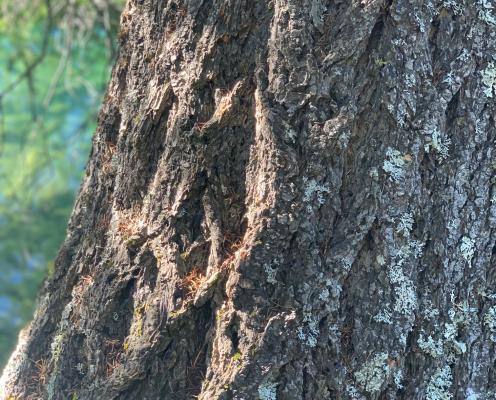
You’ll see old-growth Doug-fir specimens in our parks across the state. Look for them in Riverside, Beacon Rock, Rockport, Moran and Federation Forest.
Did you know State Parks manages the largest portion of the remaining low elevation old-growth forest in Washington?
And next time you visit your favorite park, check out those mouse butts, er, Doug-fir cones!
Originally published October 02, 2024
